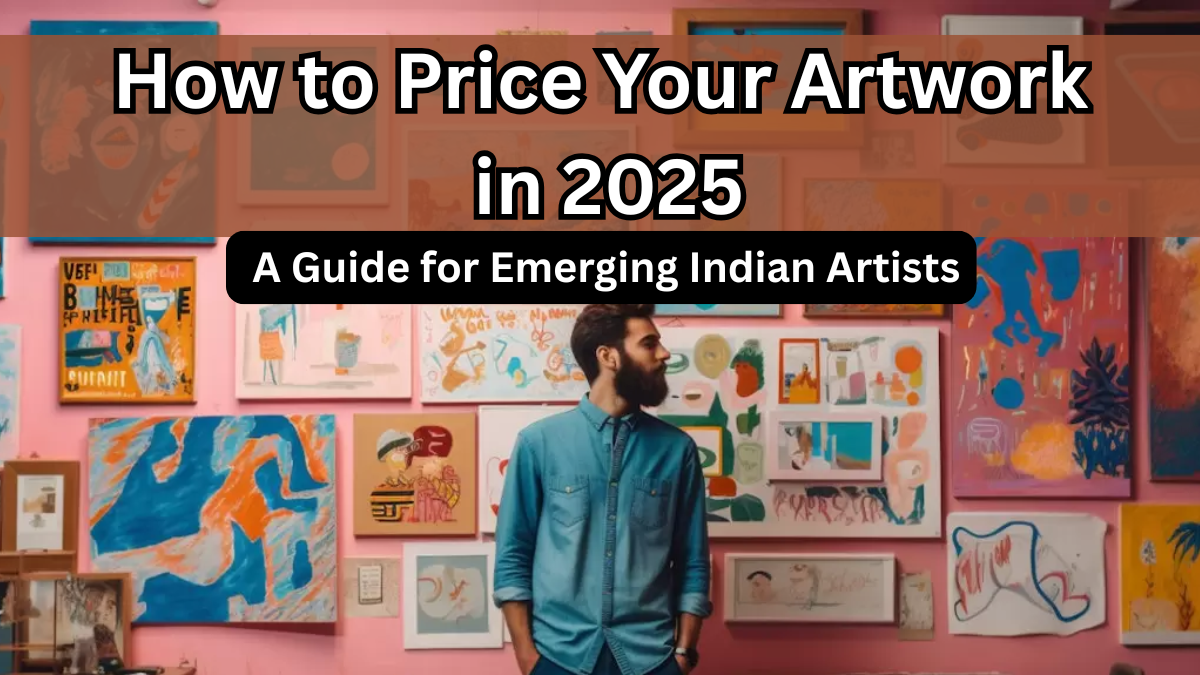For many new painters, sculptors, and digital creators, putting a price tag on creativity can feel overwhelming. While passion fuels your art, fair pricing ensures you can sustain your career. In 2025, the Indian art market continues to evolve, offering fresh opportunities for emerging artists. This Emerging Artists Guide will walk you through practical steps, tips, and insights on artwork valuation that balance creativity with financial sustainability.

Why Pricing Your Artwork Matters
Pricing is more than just numbers—it communicates value. A poorly priced artwork might:
-
Undervalue your talent
-
Scare away buyers
-
Impact your long-term brand positioning
Getting pricing right helps you:
-
Build trust with collectors
-
Earn consistent income
-
Position yourself competitively in the Indian art market
Factors to Consider in Artwork Valuation
| Factor | Why It Matters | Example for Emerging Artists |
|---|---|---|
| Size of Artwork | Larger works usually command higher prices | A 24×36 inch painting priced higher than a 12×12 canvas |
| Medium Used | Oil, acrylic, digital, or mixed media all carry different market values | Oil paintings often priced higher than sketches |
| Time Invested | Hours spent add to the perceived value | 40+ hours of work justifies higher pricing |
| Experience Level | Established names attract more value | Emerging artists start lower but can scale |
| Market Demand | Trending styles or subjects can raise prices | Contemporary Indian art often gains traction in galleries |
Practical Strategies for Pricing Your Artwork
1. Calculate Your Base Costs
Include materials, framing, studio rent, and time spent. A cost-based formula ensures you never sell at a loss.
2. Use Square Inch Pricing
A popular method in Art Pricing India is charging by square inch.
-
Example: ₹20 per square inch → A 12×12 artwork = ₹2,880.
3. Study Market Trends
Browse galleries, online art platforms, and exhibitions. Compare your style and size with similar works.
4. Create Price Consistency
Collectors value transparency. Ensure your work is consistently priced across platforms (Instagram, exhibitions, galleries).
5. Leave Room for Growth
Start modest but allow space to increase prices as your demand grows. This keeps your artwork valuation flexible and future-proof.
Common Pricing Mistakes to Avoid
-
Undervaluing your work – Selling too low affects long-term reputation.
-
Overpricing without credibility – Collectors expect justification.
-
Inconsistent pricing – Different prices on different platforms confuse buyers.
-
Ignoring commissions – Factor in gallery cuts (30-50%).
Building Confidence as an Emerging Artist
This Emerging Artists Guide emphasizes that your price reflects your journey. Confidence grows when you:
-
Track your sales history
-
Document customer feedback
-
Participate in exhibitions
-
Network with fellow Indian artists
Remember: How to Price Your Artwork in 2025 isn’t just about money—it’s about claiming your worth.
FAQs
Q1. What’s the best method to start pricing as a beginner?
Start with a cost-based approach and square inch pricing. This ensures you cover expenses while remaining competitive.
Q2. How often should I increase my artwork prices?
Review annually or after major milestones (exhibitions, awards, sold-out collections).
Q3. Should I price differently for online vs offline sales?
No—maintain consistency across platforms. However, you can add shipping/handling costs for online buyers.
Q4. How do I know if my art is overpriced?
If your works aren’t selling despite good visibility, revisit your artwork valuation. Compare with similar Indian artists in your category.
Final Word
As an emerging artist in India, pricing your art fairly is both an art and a science. By blending creativity with smart business decisions, you’ll ensure that your passion also builds a sustainable career.
Click here to learn more